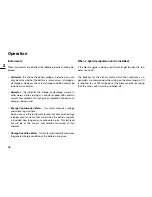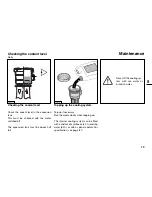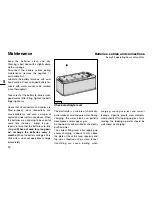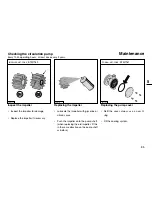
Please read this Manual before using the motor, and take into
account the directions concerning use, installation and mainte-
nance. This will prevent breakdowns and accidents, preserve
your guarantee rights and keep your propulsion installation in
good condition.
This motor is exclusively intended for application as specified in
Vetus documentation. Any other use is considered to be in viola-
tion of its purpose. The manufacturer cannot accept any respon-
sibility for consequent damage. Any risk will be the exclusive
responsibility of the user.
Use as intended includes following the operating, maintenance
and repair instructions as stated by the factory. The motor may
only be operated, maintained and repaired by persons who are
qualified and who are aware of the risks.
The relevant instructions concerning accident prevention and
other generally accepted safety and operating instructions must
be followed.
The manufacturer will not be responsible for any direct or conse-
quential damage resulting from modifications to the motor or
control circuitry.
The following points should be noted for a vessel with electrical
propulsion, when compared with a vessel using a diesel engine
for propulsion:
The necessary energy is carried in the form of charged batteries
instead of a full fuel tank. For a comparable energy content, the
weight of the batteries is about 100 times as much as the weight
of fuel.
In order to obtain a reasonable radius of operation, with an
acceptable battery capacity (weight of batteries) you should be
economical with the available energy.
The relationship between speed and motor power is not linear.
Suppose a vessel running at maximum motor power achieves a
speed of 4,9 knots (approx. 9 kph). The same vessel will still
maintain a speed of approx. 4 knots (7.5 kph) using only half the
motor power.
When the motor provides only half the power, it will also use only
half the current! So the radius of operation will be considerably
increased.
With reference to the weight of the batteries, considerable care
should be taken with the placing of the batteries for the best
weight distribution.
We will be glad to answer any of your questions.
Vetus den Ouden N.V.
22
Introduction
1
Summary of Contents for EP2200K
Page 22: ...20 ...
Page 40: ...38 ...
Page 58: ...56 ...
Page 78: ...76 VD00211 EP2200KH 8 ...
Page 82: ...80 VD00201 170 ø 16 G 3 4 ø 50 max 35 120 IN OUT FRONT 275 43 VD00445 9 ...
Page 83: ......
















































